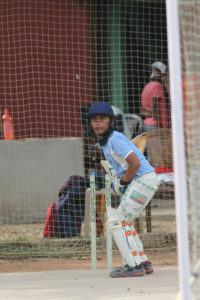ESTD : 1946
Regd. Under Societies Act. XXVI of 1961 Regd. No. : S/5614

The eye movements tell how complex decisions can be made and that gives us the insight that makes the common cricketers to the expert cricketers.
One of the fastest movements that the body can formulate is with the help of eyes. When we move them to look at something that’s grasp our interest, that short, sharp, jerky movement is called a saccade or a rapid, jerky movement of the eyes between positions of rest. On average, we make such movement about three of them on every second.
Eye movements are interesting, because they represent every step of the movement: first and last. They are responsible for stabilising images that are sent out to the brain against jitter, that is the small rapid variations in a waveform resulting from the fluctuations in the voltage supply or mechanical vibrations or other sources caused by head movements. But they’re also a response to our representation of the world; to information about plans, goals, interests and even expectations about future events.
So, eye movements are helpful to understand how, where and why our eye moves. It provides us with the data or knowledge on how the brain goes about making decisions. The eye movement takes about less than a second to be planned and carried out, and a cricket ball is bowled at the speed of 70mph.
In the case of the best batsman, the eye movements were kicked off than the worst batter. It means that he got more time to adopt information regarding the motion of the ball at the bounce point. The expertise results in being capable of predicting more precisely the movement of the cricket ball.
All of these predictive movements offer the brain with more information in regard to what’s going on around you, which in turn gives you a little bit more time to prepare and adjust your own movements.